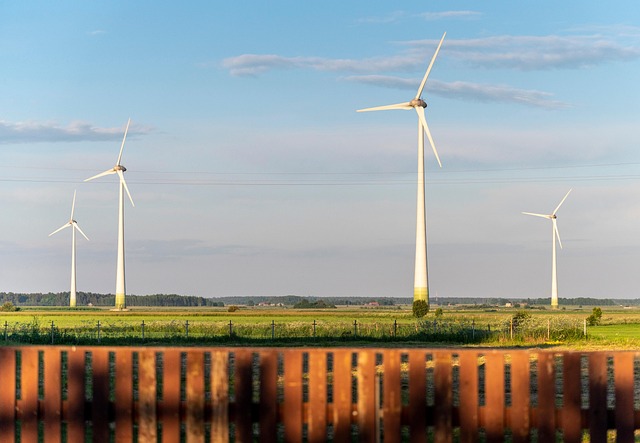Renewable Power Myths Debunked: What You Need to Know
The transition to renewable energy has been gaining momentum in recent years. As awareness surrounding climate change and the depleting nature of fossil fuels grows, many individuals and organizations are looking for sustainable alternatives. However, with this increasing interest comes a host of myths and misconceptions that can cloud the public’s understanding of renewable energy sources. In this article, we will explore some common myths about renewable power, debunk them, and provide the factual information needed to appreciate the true benefits of renewable energy.
Myth 1: Renewable Energy Is Too Expensive
One of the most pervasive myths is that renewable energy is cost-prohibitive. While this may have been true in the early stages of renewable technology development, it is increasingly outdated. The costs of solar panels and wind turbines have dropped significantly over the last decade, making renewable energy sources increasingly competitive with traditional fossil fuels. According to various studies, the price of solar power has dropped by about 89%, and onshore wind has seen a reduction of around 70% since 2009. This trend is expected to continue, driving costs down even further.
Moreover, when considering the total cost of fossil fuels, including health impacts and environmental degradation, the economic argument for renewable energy becomes even clearer. By investing in renewables, societies can save on healthcare costs, mitigate climate change, and create new jobs within emerging energy sectors.
Myth 2: Renewable Energy Is Unreliable
Another common myth about renewable energy is that it is unreliable and unable to provide consistent power. Critics often point to the intermittent nature of solar and wind energy, suggesting that they cannot deliver energy when needed. However, advancements in battery storage technology and renewable energy management have reshaped this narrative. Energy storage systems, such as lithium-ion batteries and pumped hydroelectric storage, can mitigate the intermittency issue by storing excess energy generated during peak production times and distributing it when demand arises.
Additionally, a diverse energy mix that includes different renewable sources can enhance reliability. For instance, solar power generation is often highest during the day, while wind speeds can be more robust at night or during certain seasons. By employing a combination of solar, wind, hydro, and biomass energy, along with energy storage solutions, regions can achieve a stable and reliable energy supply.
Myth 3: Renewable Energy Can’t Scale to Meet Demand
While skeptics argue that renewable energy cannot scale to meet the demands of modern society, innovative technologies and policy initiatives are steadily countering this claim. Countries that have invested heavily in renewable technology, like Germany, Denmark, and Spain, have successfully integrated substantial percentages of renewable sources into their energy grids. In certain cases, they have even managed to produce more energy than they can consume, leading to the export of surplus electricity.
Moreover, the potential for large-scale renewable energy is monumental. Offshore wind farms, solar fields, and bioenergy plants can generate vast amounts of energy. In fact, a report from the International Renewable Energy Agency (IRENA) indicates that wind and solar power alone have the potential to provide more than 80% of global electricity needs by 2050.
Myth 4: Renewable Energy Is Harmful to the Environment
Many people believe that renewable energy sources have their own harmful environmental impacts, equating them to fossil fuels. While it is true that no energy source is entirely devoid of environmental impact, the consequences of renewable energy sources are significantly less detrimental when compared to fossil fuels. For instance, while the production of solar panels requires energy and raw materials, the long-term environmental implications are minuscule compared to burning coal or natural gas.
Renewables like solar and wind produce minimal greenhouse gases during operation, in stark contrast to fossil fuel sources that are primary contributors to global warming. Furthermore, initiatives like responsible land use planning minimize the impact of wind farms and solar installations on local ecosystems, ensuring that renewable sources do not endanger wildlife or disrupt habitats.
Myth 5: Renewable Energy Has No Job Growth Potential
Contrary to claims that renewable energy sources do not create jobs, the opposite is true. The renewable energy sector has become a significant driver of job creation globally. The growth of industries revolving around solar, wind, and other renewables has led to the employment of millions of individuals in manufacturing, installation, maintenance, and research and development roles. According to the International Renewable Energy Agency, over 11 million people were employed in renewable energy sectors globally in 2018, a figure that has only continued to rise.
The job market associated with renewables is also diverse and resilient, with opportunities ranging from skilled labor positions in installation and maintenance to high-tech roles in research and development. By prioritizing the transition to renewable energy, governments and businesses can stimulate local economies, drive innovation, and create sustainable jobs.
Myth 6: Transitioning to Renewable Energy Will Lead to Higher Electricity Prices
Some opponents of renewable energy argue that the shift from fossil fuels will result in higher electricity prices for consumers. While initial investments in renewable infrastructure can be significant, research shows that the long-term savings through reduced operational costs and the avoidance of the price volatility associated with fossil fuels can benefit consumers greatly. In places where renewable energy is heavily incorporated, electricity prices have remained stable or decreased.
Moreover, net metering programs allow homeowners with solar panels to sell excess energy back to the grid, further reducing their electricity bills. As the costs of renewable technology continue to fall, it is increasingly evident that the move toward renewables can lead to lower energy prices for consumers in the long run.
Myth 7: Nuclear Energy Is a Form of Renewable Energy
Nuclear energy is frequently included in discussions about renewable energy, but it is essential to differentiate between the two. While nuclear power produces low greenhouse gas emissions during operation and can generate substantial energy output, it relies on uranium, a finite resource, rather than renewable sources like sunlight or wind. The long-term sustainability and potential hazards associated with nuclear waste disposal also raise concerns about its classification as a renewable energy source.
In summary, while nuclear energy plays a role in the quest for cleaner energy, it should not be classified alongside truly renewable sources. Each energy source plays a unique role in the overall energy mix, and it’s crucial to weigh their merits and challenges appropriately.
The Path Forward: Embracing Renewable Energy
With ongoing advancements in technology, reductions in costs, and a growing understanding of the benefits of renewable energy, it is clear that these power sources will play a critical role in shaping a sustainable future. By debunking the myths surrounding renewable energy, we can better appreciate its potential to drive economic growth, create jobs, and ensure environmental sustainability.
As consumers and policymakers, it is essential to stay informed and proactive in supporting the growth of renewable energy. Encouraging investment in new technologies, implementing progressive policies, and striving for a more sustainable energy future will ensure a cleaner, healthier planet for generations to come.
Conclusion
Renewable energy is not just a trend but a vital component of our global efforts to combat climate change and move towards sustainable living. By addressing and eliminating common misconceptions surrounding renewable sources, we foster a greater understanding of their true potential, paving the way for an energy landscape that champions sustainability, prosperity, and resilience.



